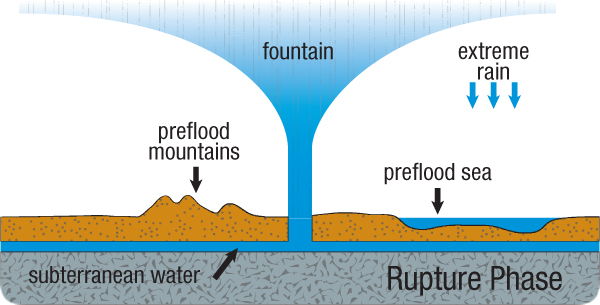genuineoriginal
New member
Deposition either side of the rupture would have been very similar.
The evidence from Paleocurrents disagrees.
What are Paleocurrents?
Paleocurrents are directions of movement of fluid and the entrained particles responsible for the
formation of sedimentary rocks. These current directions can be retrieved from sedimentary
rocks by measuring the direction and/or sense of paleocurrent indicators preserved within the
rocks themselves. These paleocurrent indicators include crossbeds, ripple marks, flute and
groove casts, parting lineations, fossil orientations, imbrications and other more obscure features
of sedimentary rocks. Crossbeds are faint layering visible in sandstones and other clastic rocks
(rocks made of particles of other rocks – sandstone, shale, etc.) that strike diagonally across the
thickness of the beds. Ripple marks are miniature dunes resulting from the transport of sand and
mud that are often seen on the banks of rivers and streams. Flute casts, groove casts and tool
marks are structures reflecting deposition in turbidites and other mass flow phenomena that are
seen most often on the underside of rock layers. Parting lineations are trains of sand grains
exposed when layers of sandstone are pried apart that reflect the movement of the grains during
deposition. Imbrication is the domino-like orientation of clasts resulting when the grains achieve
the most stable position during deposition. All of these features are capable of yielding the kinds
of data required for reconstruction of paleocurrents.
Paleocurrents are directions of movement of fluid and the entrained particles responsible for the
formation of sedimentary rocks. These current directions can be retrieved from sedimentary
rocks by measuring the direction and/or sense of paleocurrent indicators preserved within the
rocks themselves. These paleocurrent indicators include crossbeds, ripple marks, flute and
groove casts, parting lineations, fossil orientations, imbrications and other more obscure features
of sedimentary rocks. Crossbeds are faint layering visible in sandstones and other clastic rocks
(rocks made of particles of other rocks – sandstone, shale, etc.) that strike diagonally across the
thickness of the beds. Ripple marks are miniature dunes resulting from the transport of sand and
mud that are often seen on the banks of rivers and streams. Flute casts, groove casts and tool
marks are structures reflecting deposition in turbidites and other mass flow phenomena that are
seen most often on the underside of rock layers. Parting lineations are trains of sand grains
exposed when layers of sandstone are pried apart that reflect the movement of the grains during
deposition. Imbrication is the domino-like orientation of clasts resulting when the grains achieve
the most stable position during deposition. All of these features are capable of yielding the kinds
of data required for reconstruction of paleocurrents.

